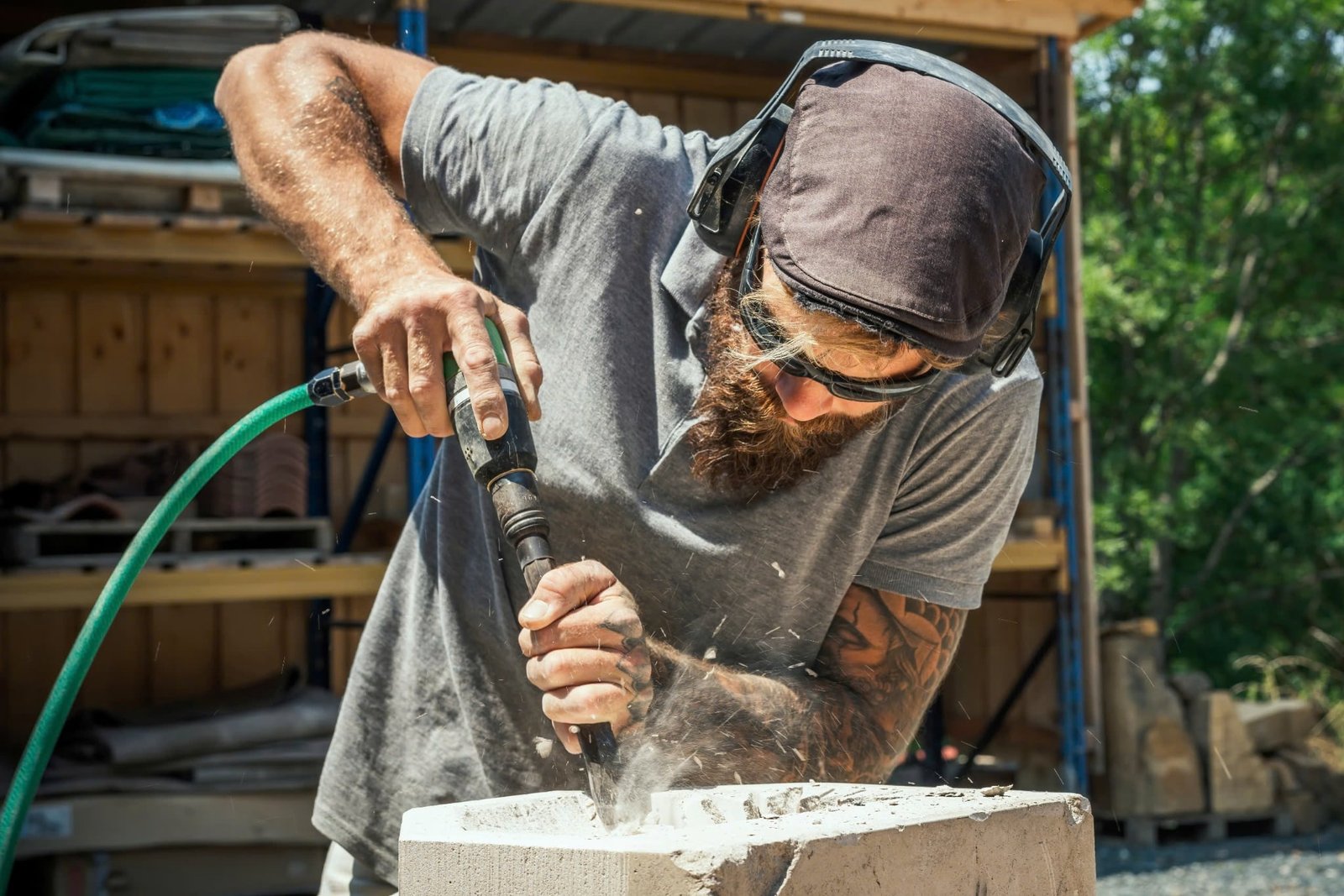
When choosing a surface for your kitchen, bathroom, or outdoor space, two premium options often come to mind: granite countertop and marble countertops.
When choosing a surface for your kitchen, bathroom, or outdoor space, two premium options often come to mind: granite countertop and marble countertops. Both natural stones offer elegance and prestige, but they differ significantly in performance, maintenance, and durability.
In this article, we’ll explore where a granite countertop outperforms a marble countertop, helping you make an informed decision based on function, beauty, and long-term value.

Understanding Granite and Marble Countertops
Both granite and marble are natural stones, but they differ in composition and properties.
- Granite: An igneous rock made primarily of quartz, feldspar, and mica. It’s formed through cooling magma, giving it extreme hardness and durability.
- Marble: A metamorphic rock composed mostly of calcite. It’s softer and more porous, giving it a luxurious, velvety appearance but making it more vulnerable to damage.
Each material brings beauty, but in practical terms, granite often has the upper hand, especially in busy households and heavy-use areas.
1. Durability and Scratch Resistance
Granite countertop surfaces are significantly harder than marble, making them much more resistant to scratches, chips, and everyday wear.
| Property | Granite Countertop | Marble Countertop |
|---|---|---|
| Hardness (Mohs Scale) | 6–7 | 3–5 |
| Scratch Resistance | Excellent | Moderate to Poor |
| Impact Resistance | High | Moderate |
If you’re planning to use the surface for kitchen countertops—where knives, pots, and pans are common—granite is the clear winner.
Want to understand more about granite’s resilience?
👉 What Makes a Granite Countertop Resistant to Scratches and Stains?
2. Stain Resistance and Porosity
Marble’s beautiful veining comes from its porous nature, but that also makes it more susceptible to stains from oils, wine, and acidic foods. Granite, on the other hand, is much less porous, especially when properly sealed.
Granite Advantages:
- Better stain resistance after sealing
- Lower absorption rate, reducing the risk of permanent discoloration
- Easier and less frequent resealing needed compared to marble
Proper granite countertop maintenance further enhances this natural advantage.
3. Heat Resistance
Both marble and granite resist heat reasonably well, but granite outperforms marble in real-world kitchen conditions.
- Granite withstands direct placement of hot pots and pans better.
- Marble can suffer thermal shock or discoloration if exposed to extreme temperatures suddenly.
For a kitchen countertop where cooking is frequent, granite is the smarter, safer choice.
4. Long-Term Cost Effectiveness
While initial granite countertop prices and marble prices can be similar (depending on color and quality), granite offers better value over time.
- Lower maintenance costs
- Fewer repairs
- Longer lifespan without needing polishing or restoration
Granite also retains its value longer in real estate, making it a smarter investment for your home.
Want to learn how to maximize your granite investment?
👉 What Are the Best Ways to Save Money on Granite Countertops?
5. Ease of Maintenance
Marble requires frequent sealing and special care to avoid etching, staining, and scratching. Granite maintenance is far easier and less expensive.
Granite Countertop Cleaning Routine:
- Daily: Wipe with warm water and mild soap.
- Weekly: Use a stone-safe cleaner for deeper cleaning.
- Yearly: Check sealant and reseal if necessary.
Marble Maintenance:
- Immediate cleaning of all spills (even water)
- Monthly sealing
- Risk of permanent etching from acidic foods or cleaners
Busy households will appreciate granite’s forgiving nature.
6. Variety of Colors and Design Flexibility
Both stones are beautiful, but granite offers a broader range of colors and patterns that can fit into more granite countertop design schemes.
| Stone Type | Color Range | Pattern Variety |
|---|---|---|
| Granite | Wide (Black, White, Gray, Blue, Red) | Flecked, Veined, Speckled |
| Marble | Narrow (Mostly White, Beige, Gray) | Predominantly Veined |
Modern homes often require greater flexibility, making granite the superior choice for matching varied design styles—from rustic kitchens to ultra-modern spaces.
7. Repairability and Longevity
Although granite is incredibly durable, if it does chip or crack, granite countertop repair is typically easier and less noticeable compared to marble repair.
- Granite chips are filled and polished with color-matched resins.
- Marble repairs often remain visible due to the uniformity of color and fine veining.
Choosing granite means fewer worries about the cost and visibility of future repairs.
8. Outdoor Performance
If you’re designing an outdoor kitchen or patio space, granite is the clear winner.
- Granite resists UV fading and weather-related damage.
- Marble is sensitive to acid rain, moisture, and temperature swings.
Granite maintains its beauty outdoors with minimal effort, unlike marble, which requires constant protection.
Average Granite Countertop Prices vs. Marble
Understanding typical costs helps you budget smartly.
| Material | Installed Cost per Sq. Ft. |
|---|---|
| Granite | $40–$250 |
| Marble | $60–$300 |
Entry-level and mid-range granite options often provide better performance at a lower price than marble.
Final Thoughts: Granite Outperforms Marble in Real-World Use
While both granite and marble are stunning natural stones, granite countertops excel in key performance areas that matter most in daily life—durability, stain resistance, heat resistance, cost-effectiveness, and ease of maintenance.
For homeowners seeking beauty combined with practicality, granite proves to be the superior choice time and time again.

